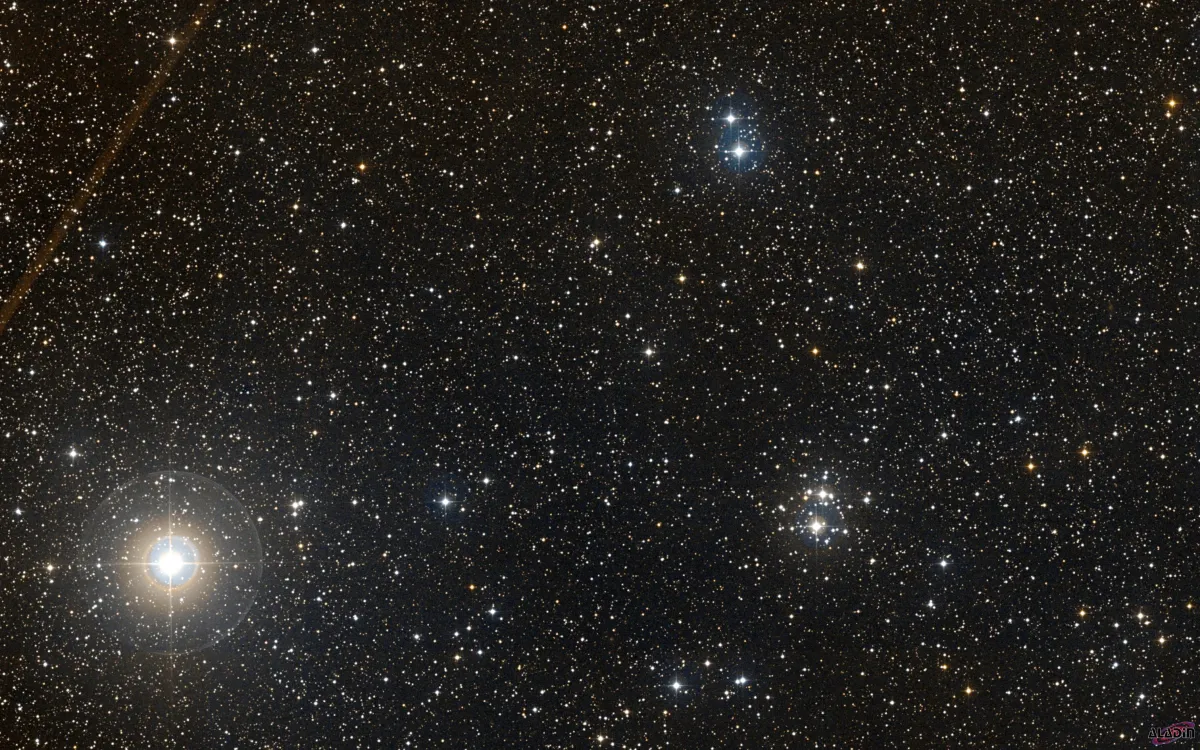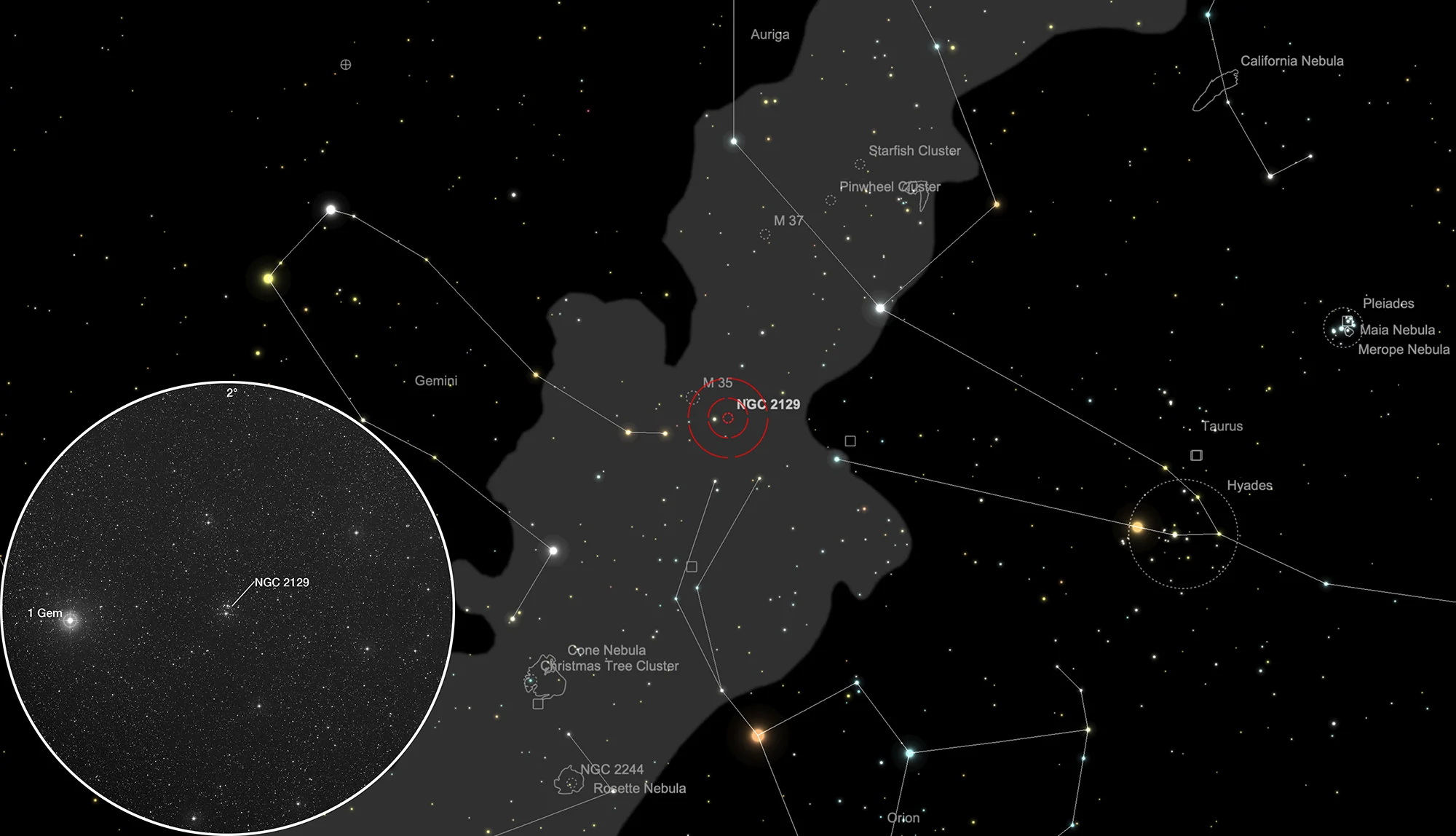Open Cluster NGC 2129

History
This open cluster was discovered on 6 February 1782 by German-British astronomer William Herschel, although he did not recognize it then as such. He was conducting his third star review using his 6.2" reflector and catalogued it as the multiple star IV. 48 for which he noted: «Quintuple. In the form of a cross. About 2/3 degree north preceding H Geminorum, in a line parallel to the 65th Orionis and ζ Tauri; the middle of three. The two nearest or preceding of the five extremely unequal. Distance 20'' 57'''. Position 7° 27' south preceding. The last of the three, in the short bar of the cross, has an excessively obscure star near it of the third class. Five more in view, differently dispersed about the quintuple.» [734]
On 16 Nov 1784 Herschel rediscovered this cluster while he was sweeping the sky with his 18.7-inch speculum reflector of 20 feet focal length in Datchet, near to Windsor Castle. He listed the cluster as VIII 26 and noted: «A Cluster of stars of various magnitudes, not very rich, 6 or 7' diameter.» [463]
Continuing his father's work, John Herschel observed the cluster on 24 February 1827 (sweep 59), listed it as h 372 and wrote: «About 40 or 50 stars. The brightest 8 mag taken. The rest are 10...15 mag.» [466]
Physical Properties
NGC 2129 is a young, compact star cluster with a radius of 2.0–2.5 arcminutes, corresponding to about 1.0–1.3 parsecs at its estimated distance. Located roughly 2200 parsecs from the Sun in the direction of the Galactic anticentre, it lies within the Local Spiral Arm. The cluster contains 37 probable member stars with spectral types earlier than A5. It exhibits a mean reddening of E(B − V) = 0.82 ± 0.08, along with significant differential reddening across the region. The cluster's estimated age is around 10 million years. [738]
| Designation | NGC 2129 |
| Type | OCL (III3p) |
| Right Ascension (J2000.0) | 06h 01m 06.5s |
| Declination (J2000.0) | +23° 19' 04" |
| Diameter | 6 arcmin |
| Visual magnitude | 6.7 mag |
| Metric Distance | 1.515 kpc |
| Dreyer Description | Cl, pL, 40 or 50 st 8…15 |
| Identification, Remarks | WH VIII 26; h 372; GC 1325; OCL 467 |
Finder Chart
The open cluster cluster NGC 2129 can be found in the constellation Gemini. On 23 December it in opposition with the Sun and is therefore highest in the sky at local midnight.
